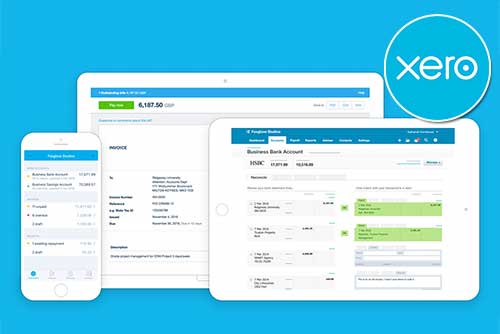What is Gross Profit Margin?
In business, understanding financial metrics is crucial for making informed decisions and assessing the health of a company. One such metric that holds significant importance is gross profit margin. Whether you’re a seasoned entrepreneur, a startup owner, or an investor, grasping the concept of gross profit margin is essential for navigating the intricacies of financial management.
Understanding Gross Profit Margin
Gross profit margin is a financial metric that measures the profitability of a company’s core business activities. It represents the percentage of revenue that exceeds the cost of goods sold (COGS), or in simpler terms, the profit a company makes from its product or service before deducting operating expenses.
Gross Profit Margin Formula
Expressed as a percentage, the formula for calculating Gross Profit Margin is straightforward:
Gross Profit Margin (%) = (Gross Profit/ Revenue) x 100
Components of the Gross Profit Margin Formula:
- Revenue: This is the total income generated from selling goods or services.
- Cost of Goods Sold (COGS): COGS comprises all the direct costs associated with producing or purchasing the goods that a company sells during a specific period.
- Gross Profit: Once you subtract the COGS from the revenue, you’re left with the gross profit. This figure represents the amount of money the company has made from its core business activities.
Significance of Gross Profit Margin
The gross profit margin holds significant importance for businesses, investors, and financial analysts due to several key reasons:
- Performance Indicator: Gross profit margin provides insights into how efficiently a company is managing its production process and pricing strategy. A higher gross profit margin indicates that the company is generating more profit from each unit sold, which is generally a positive sign.
- Comparative Analysis: It enables comparisons between companies operating in the same industry or sector. A company with a higher gross profit margin may be more efficient or have a competitive advantage over its peers.
- Investment Decision-Making: Investors often use gross profit margin as one of the metrics to evaluate the financial health and growth potential of a company. A consistent or improving gross profit margin over time may signal strong management and growth prospects.
Interpreting Gross Profit Margin
Interpreting gross profit margin involves analysing the percentage of revenue a company retains after deducting the costs directly associated with producing its goods or services.
While a high gross profit margin is generally desirable, it’s essential to consider industry standards and other factors. A high margin may indicate pricing power or operational efficiency, but it could also suggest underinvestment in areas like research and development.
Here’s a breakdown of ways to analyse and interpret gross profit margin:
- Comparison with Industry Averages: Comparing a company’s gross profit margin to industry benchmarks provides context for its performance. If the company’s gross profit margin exceeds the industry average, it may indicate operational efficiency or pricing power.
- Trend Analysis: Monitoring changes in gross profit margin over time offers insights into the company’s performance trajectory. A consistent or improving gross profit margin indicates effective cost management and/or revenue growth strategies. However, declining gross profit margin warrants further investigation into potential issues affecting profitability.
- Cost Structure Analysis: Examining the components of COGS helps identify cost drivers impacting gross profit margin. A high percentage of COGS relative to revenue may indicate excessive production costs or inefficient supply chain management.
- Integration with Other Metrics: gross profit margin should be analysed alongside other financial metrics, such as net profit margin, operating margin, and return on investment. Combining these metrics offers a comprehensive view of a company’s profitability, efficiency, and overall performance.
How to Improve Gross Profit Margin
- Price Optimisation: Review pricing strategies to ensure products or services are priced competitively while still allowing for sufficient margins. Conduct market research to understand customer preferences, willingness to pay, and price sensitivity.
- Cost Reduction: Identify areas where production costs can be reduced without compromising product quality. This may involve renegotiating supplier contracts, streamlining manufacturing processes, improving inventory management, or exploring alternative sourcing options.
- Efficiency Improvements: Implement lean manufacturing principles and continuous improvement initiatives to optimise production processes, reduce waste, minimise downtime, and enhance overall operational efficiency.
- Product Mix Optimisation: Analyse sales data to identify high-margin products or services and allocate resources accordingly. Focus on promoting and selling products with higher profit margins while phasing out or reevaluating underperforming products.
- Value-Added Services: Offer complementary services or value-added features to differentiate products and justify premium pricing. Upsell or cross-sell related products or services to increase average transaction value and enhance overall profitability.
The Limitations of Gross Profit Margin
While gross profit margin is a valuable metric for assessing a company’s profitability, it also has several limitations that need to be considered:
- Excludes Operating Expenses: Gross profit margin only considers the direct costs associated with producing goods or services (COGS) and does not take into account operating expenses such as marketing, administrative costs, research and development, and overhead expenses.
- Does Not Reflect Efficiency: Gross profit margin does not provide insights into operational efficiency or productivity improvements beyond the production stage. Companies may achieve higher gross profit margins through cost-cutting measures that compromise product quality or customer service, leading to long-term consequences such as reduced customer satisfaction or increased warranty claims.
- Susceptible to Manipulation: Companies may manipulate gross profit margin by adjusting inventory valuation methods, altering the allocation of costs between COGS and operating expenses, or engaging in aggressive revenue recognition practices. This can distort the gross profit margin and mislead investors and stakeholders about the company’s true profitability.
Gross Profit Margin vs. Net Profit Margin vs. Operating Profit Margin
Gross profit margin, net profit margin, and operating profit margin all provide insights into a company’s financial performance, but they focus on different stages of the income statement and offer varying perspectives.
Gross Profit Margin
As already established, gross profit margin is a measure of a company’s efficiency at converting raw materials and labour into products or services and selling them directly to consumers. This margin is a percentage that tells us how much profit a company makes for each pound of sales, after accounting for direct costs to produce the goods or services sold.
The formula for calculating gross profit margin is:
Gross Profit Margin = (Revenue – COGS/ Revenue) x 100
Operating Profit Margin
Operating profit margin provides a more comprehensive view of a company’s profitability by considering both the cost of goods sold (COGS) and operating expenses.
The formula for calculating operating profit margin is:
Operating Profit Margin = (Operating Income/ Revenue) x 100
This margin is particularly useful as it includes costs such as rent and office supplies, which are not directly related to the production of goods but are essential for running the business.
Net Profit Margin
This is the most comprehensive measure, accounting for all expenses, taxes, and interest. It reflects the overall profitability of a company after all expenses have been deducted from revenues.
The net profit margin is calculated using the following formula
Net Profit Margin = (Net Income/ Revenue) x 100
A low net profit margin indicates a higher risk that a decline in sales will erase profits and result in a net loss.
The Bottom Line
Gross profit margin stands as an important metric in assessing a company’s profitability, providing insights into its operational efficiency and pricing strategies. It serves as a vital tool for business owners, investors, and financial analysts, aiding in decision-making processes and offering valuable insights into a company’s financial health and growth prospects.
However, it’s crucial to recognise the limitations of gross profit margin. While it offers a snapshot of a company’s production efficiency and pricing power, it does not capture operating expenses or provide insights into overall profitability. To complement the analysis of gross profit margin, other financial metrics such as net profit margin and operating profit margin offer broader perspectives by accounting for operating expenses, taxes, interest, and other factors.





















